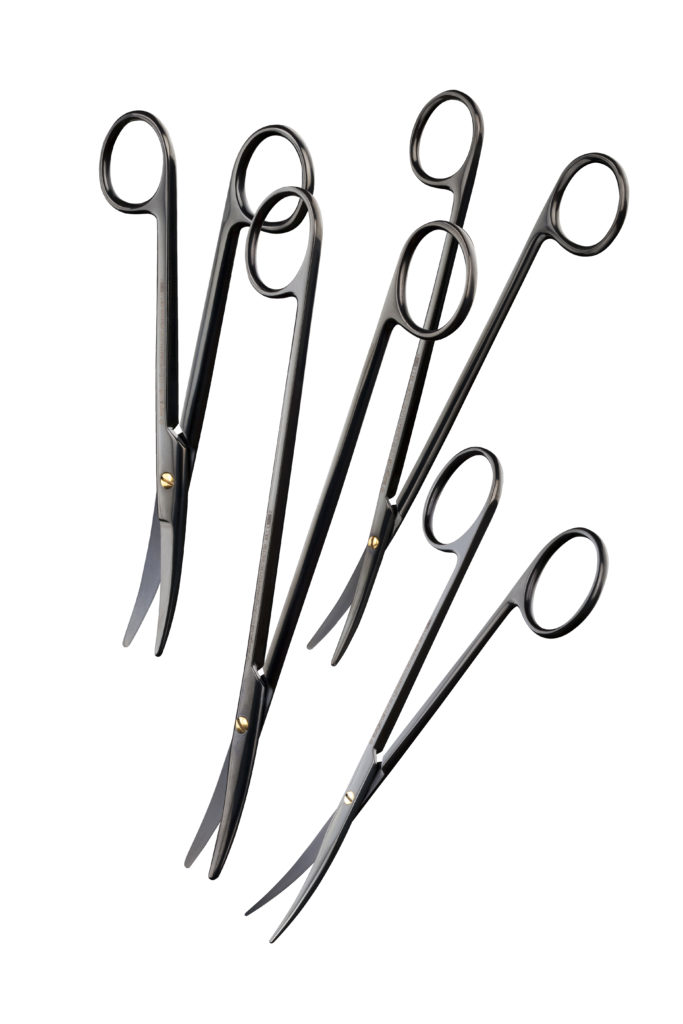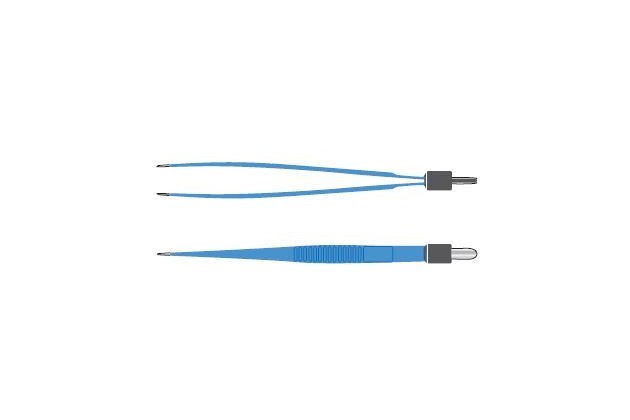in General
Instruments 101: opening and closing tissue
Welcome to our new “Instruments 101” blog series. Every month we will post some educational information about our products. Great to share with junior colleagues or those who work with theatres but not necessarily in a surgical capacity.
So without further ado, let’s look at some of the surgical tools that clinicians use to perform surgery: opening tissue and closing again.
Opening / Cutting Tissue
Mechanical cutting instruments like simple blades and scissors can be used, or technology such as diathermy (monopolar or bipolar) or ultrasound can also be appropriate. Often surgeons have to cut through many layers of tissue, and different devices may be appropriate for each layer. As the device becomes more complex it will become more expensive and inevitably more difficult to clean. These instruments often have sharp edges so need to be handled carefully.
Scalpels are often used for cutting as well, and these usually consist of a handle and a single-use blade.

There are lots of types of surgical scissors – with different handle lengths, styles and sizes. There are curved or straight ends, and each style will work best for different procedures or stages in operations. These are Nero scissors – they have a special ceramic coating to increase durability, life-cycle cost, anti-glare, cleaning efficacy and improve performance.
Some cutting instruments look more like probes than sharp devices – like the Rhoton micro dissector set. This is because of the tissue it is intended to dissect – in the Rhotons’ case this is for neurosurgery, and the brain is very soft and delicate. Hence a different shape and style is required when compared to muscle for example.
Diathermy uses an electrical current to cut and cauterise tissue. Good to stop bleeding if it is a vascular area. There are two forms – monopolar and bipolar. Monopolar uses a single electrode on the instrument, whereas bipolar uses two. There is a machine that creates the current which is connected to the instrument the surgeon uses. There are a variety of diathermy-compatible instruments which are available in different sizes and shapes, suiting a variety of different procedures.

It is important that the instrument surfaces are kept clean as desiccated tissue can get stuck to them. The coating is delicate too (if this is damaged then more tissue can stick to them, which makes it hard for the surgeon to use.) Therefore care must be taken when cleaning, so the non-stick coating is not scratched.
Close Wounds
A wound is usually closed with either a suture or a staple. Needle holders are used to grasp the needle during suturing, and sutures are available in a variety of materials and sizes. Often there are many layers of tissue to be sutured, so a dissolvable suture may be used subcutaneously (under the skin), and a ‘standard’ suture at skin level (which would need to be removed by a clinician once the wound has healed.) Stapling is quicker than suturing, however, as reusable staplers are more complicated devices they may be more difficult to clean.
If you would like to organise some staff training, the Surgical Holdings team are here to help! Please get in touch to find out what’s available: 01702 602050.
